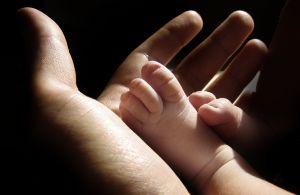Playing Sports
Sports play a significant role in millions of American children’s lives, whether on a team or played as individuals. Parents should be mindful of sports that require a substantial amount of running and turning, or involve contact. These can easily translate into injuries.Protective taping of the ankles is often necessary to prevent sprains or fractures. Parents should consider discussing these matters with their family podiatric physician if they have children participating in active sports.
Sports-related foot and ankle injuries are on the rise as more children participate actively in sports. Buying a sport-specific shoe, a shoe designed for the exact sport your child will be participating in, not only improves your child’s performance on the court or field, but also helps keep him/her free from serious foot and ankle injuries.

Without the right sock, even the best athletic shoe won’t score points on the field or off. If your child exhibits signs of hyperhydrosis (excess sweating) or bromhydrosis (foot odor), election of the appropriate athletic sock may reduce incidences of these conditions. The right athletic sock should be made of a natural/synthetic blend, as this helps “wick” away moisture best; and not contain any large seams that can cause blisters or irritation.

Advice for Parents
Problems noticed at birth will not always disappear by themselves. You should not wait until the child begins walking to take care of a problem you’ve noticed earlier. It is best to take action when the child is a toddler to ensure better responsiveness to conservative treatment options. Remember that lack of complaint by a youngster is not a reliable sign. The bones of growing feet are so flexible that they can be twisted and distorted without the child being aware of it. Walking is the best of all foot exercises, according to podiatric physicians. They also recommend that walking patterns be carefully observed. Does the child toe in or out, have knock knees, or other gait abnormalities? These problems can be corrected if they are detected early.
With the exception of infancy, going barefoot is not encouraged among children. Walking barefoot on dirty pavements exposes children’s feet to a variety of dangers including infection through accidental cuts, sprains or fractures.
Another potential problem is plantar warts, a condition caused by a virus which invades the sole of the foot through cuts and breaks in the skin. They require extensive treatment and can keep children from school and other activities.
Be careful about applying home remedies to children’s feet. Preparations strong enough to kill certain types of fungus can harm the skin.
